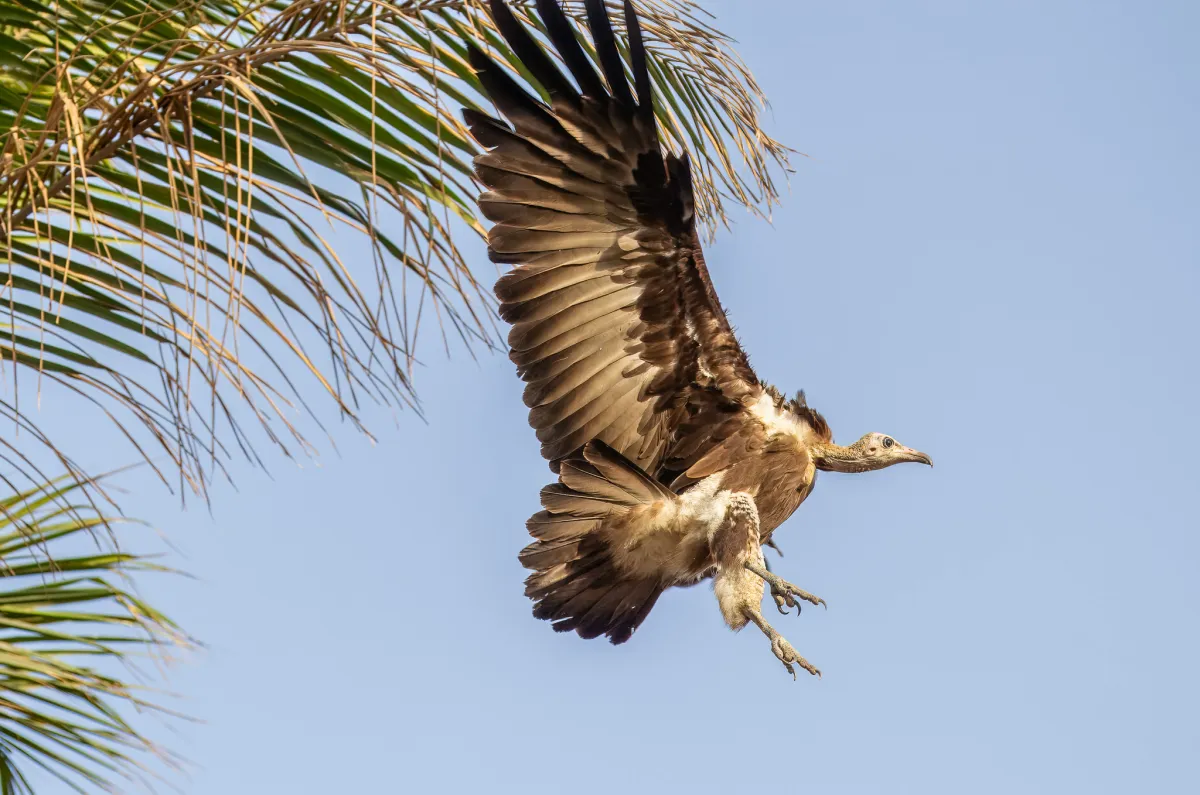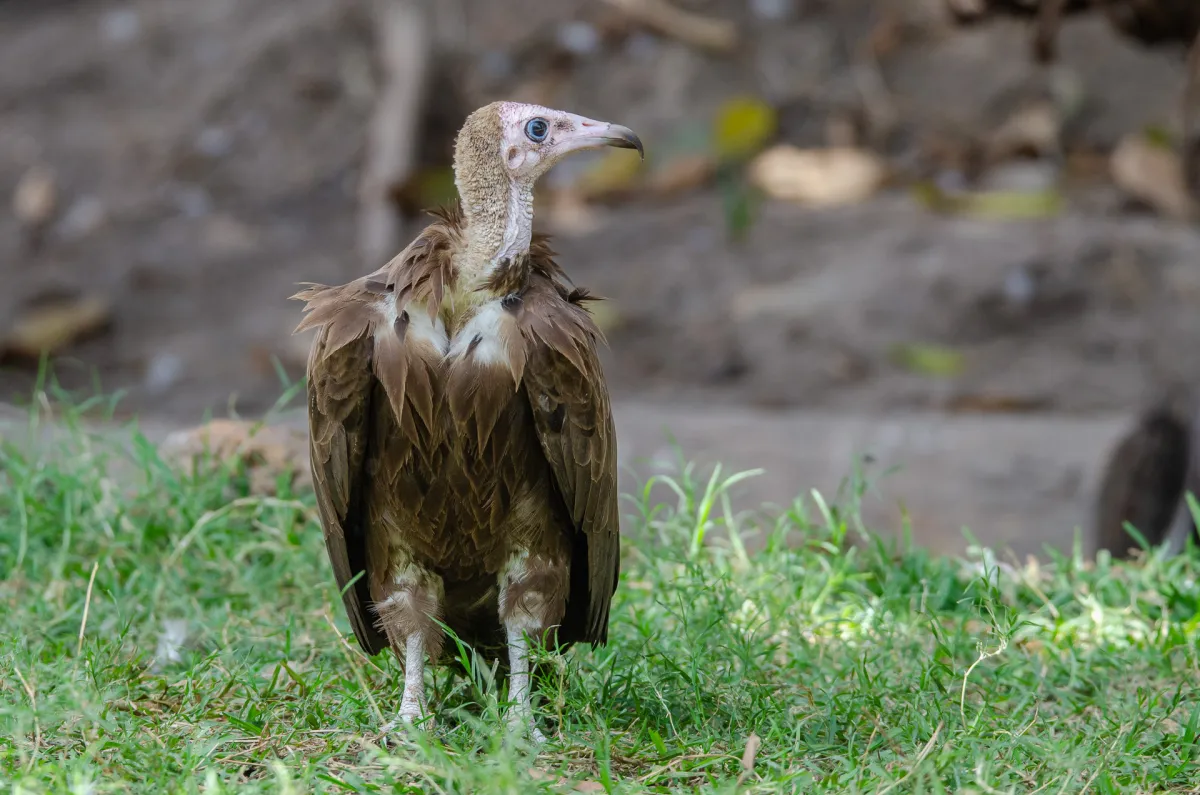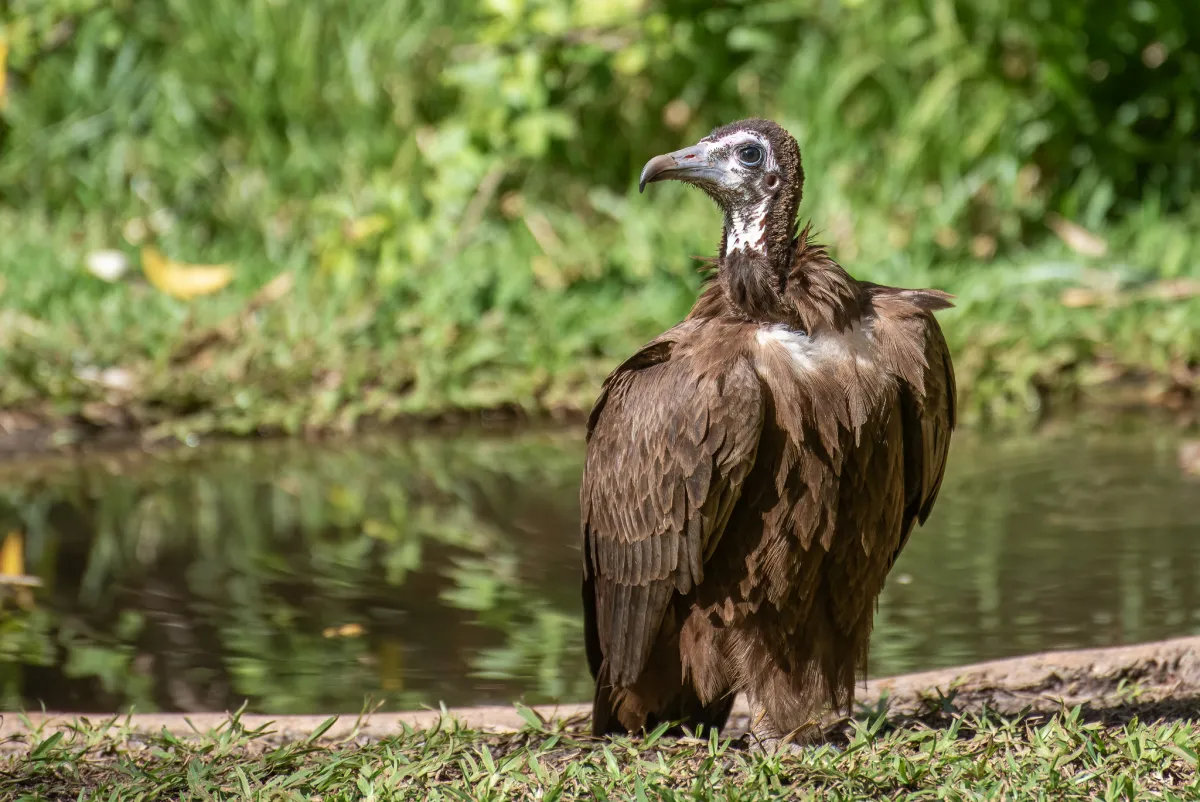Some people love vultures, some hate them and others find them frightening or menacing. I fall into the first category as I find them to be fascinating critters. Beautiful to watch in flight, very majestic as they drift effortlessly on the thermals. Perhaps a bit ungainly on the ground…

The Hooded Vulture, Necrosyrtes monachus, is an Old World vulture in the order Accipitriformes, which also includes eagles, kites, buzzards and hawks.

Description
The Hooded Vulture is a medium-sized bird (but a smallish vulture) with a wingspan ranging from 1.6 to 1.8 meters (5.2 to 5.9 feet). Its name is derived from the distinctively coloured “hood” of feathers on its head, which can range from pale buff to dark brown. The rest of its plumage is generally dark brown or black, and it has a featherless, wrinkled head, a common trait among vultures.

Habitat and Distribution
This vulture species is predominantly found in sub-Saharan Africa, inhabiting a variety of landscapes such as savannas, grasslands, and open woodlands. Hooded Vultures are highly adaptable and can be observed in both urban and rural environments, making use of thermals to soar effortlessly in search of carrion.

Breeding
It breeds in a stick nest constructed in trees, often palms, in much of Africa south of the Sahara, laying one egg. Populations are mostly resident and sedentary, rarely moving more than 200 km.

Ecological Importance
The Hooded Vulture plays a crucial role in the ecosystem by serving as nature’s cleanup crew. Its primary diet consists of carrion, and it plays a vital role in preventing the spread of diseases by disposing of animal remains efficiently. Despite their less glamorous role in comparison to other birds of prey, these vultures contribute significantly to maintaining a balanced and healthy environment.

Conservation Status
Unfortunately, like many other vulture species, the Hooded Vulture faces various threats that have led to population declines. Factors such as habitat loss, poisoning, and illegal wildlife trade have taken a toll on their numbers. Conservation efforts are underway to address these challenges and raise awareness about the importance of preserving these often misunderstood birds.

In some parts of their range, numbers have declined by 85% over the past 50 years. Although some populations remain relatively stable, overall the Hooded Vulture is now considered to be ‘critically endangered’ by the IUCN.

Behaviour and Adaptations
Hooded Vultures are known for their soaring flight patterns, effortlessly riding thermals in search of carrion. Their keen eyesight helps them spot potential food sources from great distances. Unlike some vulture species, Hooded Vultures lack a powerful beak for tearing through tough hides. Instead, they rely on their sharp beaks to pick at softer tissues, leaving the tougher parts for larger vultures.

Vultures are known as nature’s garbage disposal operatives and they do a magnificent job of cleaning up after humans. Sometimes, if an animal has been killed by a car on the road, the vultures will gather to clean up the scene, as in most cases, the humans will not bother.